Content
Rosalind Franklin´s 105th birthday

Scientific thriller about the discovery of DNA structure:
Cheated out of world fame?
Lunchtime in the pub "The Eagle" in Cambridge, 28 February 1953. People here are actually used to eccentric scientists from the nearby university. But nevertheless, the patrons are quite surprised when, in the middle of lunch, a guest suddenly jumps up from his table and loudly announces: "We have just discovered the secret of life!"
What Francis Crick meant by this could be read two months later in the scientific journal "Nature". Crick and James Watson published the article "Molecular Structure of Nucleic Acids: A Structure for Deoxyribose Nucleic Acid". The short text changed the world because it revealed the blueprint of life for the first time - the double helix structure of deoxyribonucleic acid, DNA. In 1962, Crick and Watson received the Nobel Prize for this. For years they kept quiet about the fact that their groundbreaking discovery was largely based on the research and preliminary work of Rosalind Franklin.
Long in the shadow
Rosalind Elsie Franklin, born on 25 July 1920 in Notting Hill, London, is one of the most famous female scientists in history, and despite - or perhaps because of - this concealment, she is known as the "forgotten heroine" or "Dark Lady of the DNA". Already as a young girl, she had been enthusiastic about the natural sciences and had gone her way against all odds. After studying chemistry, physics and mathematics at Cambridge, she initially did "war-related" research on the more efficient utilisation of coal, which she saw as her contribution to England´s fight in the Second World War.
After the war ended, she went to Paris for a few years, where she specialised in the structural analysis of molecules using X-rays. X-ray crystallography can be used to determine the atomic and molecular structure of a crystal by measuring the angles and intensities of diffracted X-rays. Franklin became an outspoken expert in Paris on this crystal structure analysis using X-ray diffraction. She developed a technique with which images of a previously unattained quality could be produced (this technology, by the way, is still being optimised today; see most recently, among others, ![]() EP04109083A1 (3,14 MB)).
EP04109083A1 (3,14 MB)).
It´s a man's world
In 1950, she returned to England and worked at the renowned King's College in London on the X-ray structural analysis of DNA fibres. Maurice Wilkins, who later received the Nobel Prize together with Crick and Watson for the decoding of DNA, also worked there.
Wilkins, who was not very familiar with X-ray diffraction and tended to work with microscopes (see, among other things, his patent ![]() GB695352), is said to have assumed at the time that Franklin had been hired as his assistant, not as an equal colleague. The collaboration between the two was correspondingly difficult, especially since their temperaments are said to have been very different: he was introverted, old-fashioned; she was eager to discuss, brisk and determined, multilingual, art-loving and with a wide range of interests.
GB695352), is said to have assumed at the time that Franklin had been hired as his assistant, not as an equal colleague. The collaboration between the two was correspondingly difficult, especially since their temperaments are said to have been very different: he was introverted, old-fashioned; she was eager to discuss, brisk and determined, multilingual, art-loving and with a wide range of interests.
The very young Watson and Crick, neither of them scientific high-flyers at Cambridge until then, had set their sights on beating Linus Pauling in the race to decode the structure of DNA in 1952.
Pulse race thanks to "Photo 51"
Their breakthrough came when Watson saw "Photo 51" on 30 January 1953. This image was the best X-ray diffraction image of a DNA crystal to date. It had been taken for her by Raymond Gosling, Rosalind Franklin's doctoral student, using the technique she had developed.
„The moment I saw the image, my mouth fell open and my pulse began to race," Watson later recalled. Because on picture number 51, it was clearly visible that the DNA had to be structured in a helix. Maurice Wilkins had provided Watson with the image material - behind Franklin's back, who knew nothing about it.
Watson now knew what the DNA roughly looked like. But that alone was not enough for a publication and scientific fame. What Watson and Crick needed was far more than just the idea of a helix - they needed precise observations from X-ray crystallography. Franklin also provided them with this data - again without her knowledge. It came from an unpublished research report by Franklin to the Medical Research Council, which Cambridge employee Max Perutz secretly handed over to his two ambitious young colleagues.
The double helix and its details
Using Franklin's "Photo 51" and their research report, Crick and Watson developed their equally elegant and profound DNA model at the Cavendish Laboratory of the University of Cambridge (and in the "Eagle" pub): two long DNA strands run in opposite directions and spiral around each other in the form of a double helix. Four organic bases - adenine, thymine, cytosine and guanine - are stretched between the two helices. This double-helix model of DNA with the base pairs in the middle was one of the most important biological discoveries of the 20th century. Without Rosalind Franklin, however, the insight would not have existed in this form.
In their memorable publication in Nature on 25 April 1953, Crick and Watson wrote towards the end: „It has not escaped our notice that the specific pairing we have postulated immediately suggests a possible copying mechanism for the genetic material" - the secret of life.
After all, Crick and Watson mentioned Franklin in passing in their article: "We have also been stimulated by a knowledge of the general nature of the unpublished experimental results and ideas of Dr. M.H.F. Wilins, Dr. R.E. Franklin and their co-workers at King's College, London" (annotated ![]() online version of article here).
online version of article here).
In the same issue of Nature, in addition to this short, purely theoretical article, two other factual texts on the subject had appeared, somehow supporting the new DNA model: one by Wilkins and a colleague, the other by Franklin and Gosling.
The background was that Crick and Watson had invited Wilkins and also Franklin to Cambridge in mid-March 1953 to present their new DNA model to them. Franklin had - as her laboratory notes proved years later - only a few days earlier, after long deliberations in various directions, finally also come to the conclusion that DNA had to be constructed in the form of a double helix. She therefore supported the Cambridge scientists in going public with their model - without knowing that the most important foundations for their DNA model came from her own research.
The silence of the men
The groundbreaking publication made Crick and Watson world-famous. Wilkins was to further test their DNA model in the following years, sometimes adding to and correcting it. All three were awarded the Nobel Prize for Medicine in 1962 „for their discoveries concerning the molecular structure of nucleic acids and its significance for information transfer in living material".
Rosalind Franklin was already dead by then. She had left King's College in April 1953 because of the unbearable working atmosphere and moved to Birkbeck College. She thus left DNA research behind to a large extent and devoted herself mainly to the tobacco mosaic virus. Her scientific reputation rose, but without even coming close to the world fame that Crick and Watson achieved (thanks to her preliminary work). In the autumn of 1956, she was diagnosed with ovarian cancer - possibly a consequence of her intensive work with X-rays. She continued to research until the end. Rosalind Franklin died in London on 16 April 1958.
Nobel Prizes are not awarded posthumously. Would Rosalind Franklin have received the award if she had still been alive in 1962? Neither Crick nor Watson mentioned Rosalind Franklin in their Nobel lectures.
Text: Dr. Jan Björn Potthast; Pictures: iStock.com/blackjack3d, CSHL CC by SA 4.0 via Wikimedia Commons, "Nature", Barrington Brown / Science Photo Library / Rockefeller University, MRC Laboratory of Molecularbiology CC by SA 4.0 via Wikimedia Commons
Last updated: 10 December 2025

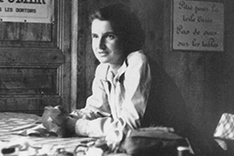
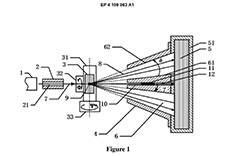
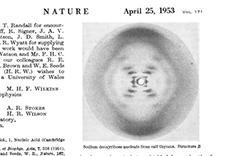
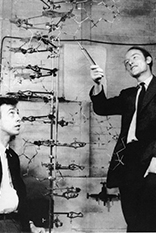
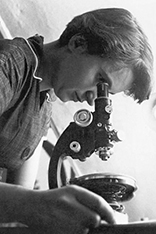
Not only protecting innovations
Social Media